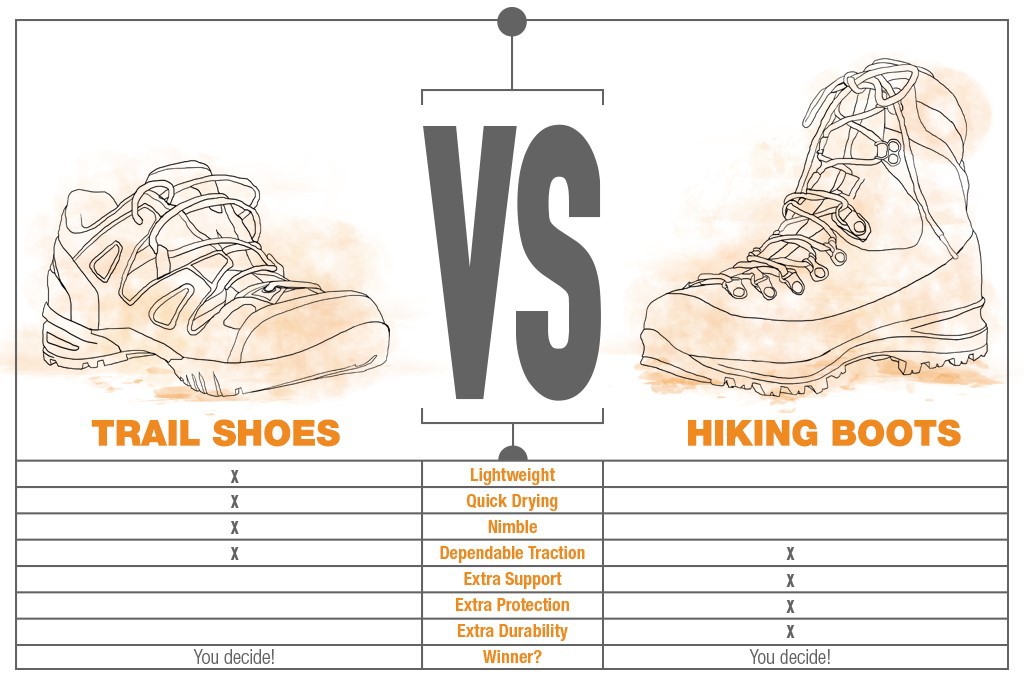Introduction
The great outdoors beckons adventurers to explore its hidden wonders, whether it’s serene mountain trails or rugged backcountry paths. A crucial part of your gear for these adventures is your footwear. Many outdoor enthusiasts often find themselves weighing the options between trail runners and hiking shoes. This comprehensive guide will delve into the nuances of both footwear types to help you make an informed decision for your next outdoor escapade.
What Are Trail Runners?
Trail runners are designed specifically for running on unpaved trails, providing the perfect blend of comfort, flexibility, and traction. They offer features that enhance the running experience over rocky terrains and uneven surfaces.
Key Features of Trail Runners
- Lightweight: Generally lighter than hiking shoes, allowing for faster movement.
- Breathability: Often made with breathable mesh materials to keep feet cool.
- Flexibility: Designed to allow natural foot movement, promoting a more efficient running stride.
- Traction: Outsoles typically feature aggressive lugs for superior grip on wet or muddy trails.
What Are Hiking Shoes?
Hiking shoes are built for stability and support on a variety of terrains. They are generally more robust and durable, designed to withstand the pressures of rugged hiking trails.
Key Features of Hiking Shoes
- Support: High ankle support helps prevent injuries on uneven ground.
- Durability: Made from tougher materials for longevity against wear and tear.
- Waterproofing: Many models include waterproof membranes to keep feet dry.
- Stability: Heavier soles provide a sturdy base for hiking over long distances.
Trail Runners vs Hiking Shoes: A Detailed Comparison
| Feature | Trail Runners | Hiking Shoes |
|---|---|---|
| Weight | Lightweight | Moderate to Heavy |
| Breathability | High | Moderate |
| Traction | Aggressive lugs for running | Varies, but generally good |
| Support | Minimal | High |
| Water Resistance | Limited | Often waterproof |
| Use Case | Running on trails | Hiking and trekking |
Benefits of Trail Runners
1. Fast-Paced Adventures
Trail runners facilitate quick movements and are perfect for those who enjoy fast-paced activities like trail running and racing.
2. Enhanced Agility
The lightweight design promotes agility and responsiveness on uneven terrain, allowing runners to navigate obstacles smoothly.
Benefits of Hiking Shoes
1. Comfort on Long Treks
The enhanced support and cushioning of hiking shoes make them ideal for long-distance hikes where comfort is paramount.
2. Rugged Durability
Hiking shoes are built to endure rough conditions, making them a long-lasting investment for avid hikers.
.jpg)
When to Choose Trail Runners?
If you plan to run on trails or participate in activities that involve a lot of quick movements, trail runners are the way to go. They’re ideal for:
- Trail races or running
- Short hikes where speed is a priority
- Lightweight travel or backpacking
When to Choose Hiking Shoes?
Hiking shoes are suited for longer treks and challenging environments. Consider them for:
- Multi-day hikes where support is critical
- Off-trail adventures with unpredictable terrain
- Extended periods in wet or muddy conditions

Tips for Choosing the Right Footwear
1. Understand Your Activity Level
Assess what type of activities you’ll be engaging in regularly. Choose trail runners for running and hiking shoes for more extended, rugged hikes.
2. Consider Your Foot Type
Flat feet may benefit from more arch support which is typically offered by hiking shoes, while normal arches might feel comfortable in lighter trail runners.
3. Fit and Comfort
Always try on both shoes and walk around in them. Look for a snug fit without pinching, ensuring there’s room for your toes.
4. Test Traction
Check the traction of the sole on various surfaces. If possible, test them on a trail before your trip to evaluate grip.
Local Experiences: Trail Running and Hiking in the USA
Whether you’re trail running in the picturesque Grand Canyon or hiking through the stunning landscapes of the Yellowstone National Park, the choice of footwear can greatly affect your experience. Local trails often differ in terrain and weather conditions, which can influence the type of footwear you should choose.

Real User Experiences
Trail Running in Colorado
Many runners in Colorado rave about the comfort and speed offered by trail runners. In areas like the White River National Forest, the rugged terrain requires footwear that can handle sharp rocks and quick elevation changes.
Hiking the Appalachian Trail
Hikers on the Appalachian Trail often opt for hiking shoes due to the diverse terrain and longer distances. With muddy sections and steep inclines, the ankle support provided by hiking shoes is invaluable.
FAQs About Trail Runners vs Hiking Shoes
1. Can I use trail runners for hiking?
Yes, trail runners can be used for hiking, especially on well-maintained trails. However, for rugged terrains, consider hiking shoes for better support.
2. Are hiking shoes suitable for running?
While hiking shoes can be used for running, they are generally heavier and less flexible than trail runners, which may hinder speed and agility.
3. How do I clean my trail runners or hiking shoes?
Generally, it’s best to hand wash your footwear with mild soap and water. Avoid using the washing machine, as it can damage the materials.
4. Do I need waterproof hiking shoes?
If you frequently hike in wet conditions, waterproof shoes may be beneficial. However, for dry environments, breathable shoes are usually adequate.
